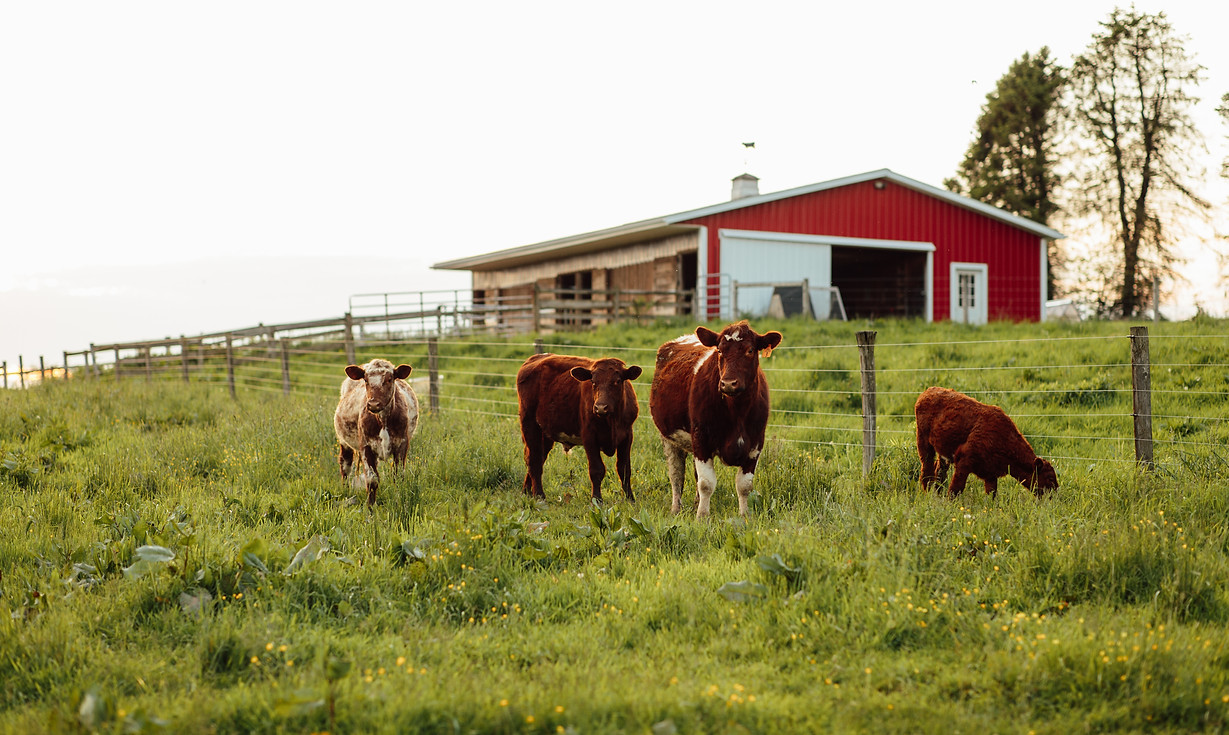Get to Know
Our Cattle
In the early days of the global coronavirus pandemic, many Americans faced an unsettling reality: empty grocery store shelves.
While the pandemic sent shockwaves across all levels of the U.S. economy, it also provided the chance to serve consumers in new and creative ways. The American Shorthorn Association recently launched an initiative to promote members who are offering beef products directly to consumers. It’s called Shorthorn Beef — Locally Raised. And guess what? That's exactly what we have right here at Laurel Oak! Laurel Oak is home to over 12 Shorthorn cattle on 36 acres.

Shorthorn
The Shorthorn breed of cattle, which we know today, has evolved over the last two centuries, from Teeswater and Durham cattle found originally in the North East of England. The importance of the Shorthorn breed in the development of other cattle breeds is enormous, and Shorthorn genetics have been used worldwide in the development of over 40 different breeds. The breed has a very long and distinguished history, and developments on both the beef and dairy sides have ensured that the breed also has a very bright future.
Shorthorns are distinctive red, white or roan in colour, and can be polled or horned. The wide genetic base results in differing maturity patterns, enabling producers to select the Shorthorn type best suited to their environment and market. They have high fertility, good mothering ability, and a docile temperament. They finish readily on good-quality pastures and are noted for their good marbling characteristics when finished on grain.
They are usually very hardy and have good disease resistance and immune systems which are essential for keeping a healthy herd. They are very good and natural grazers and can convert feed to milk and meat with great efficiency. The Shorthorn cows are very good milk producers. On average they produce around 8000 kg of milk per lactation, and their milk also has a decent ratio of protein against fat.
An advantage of the Shorthorn cross is that the steers produced have an excellent rate of gain, good feed conversion and increased marbling and tenderness Overall the Shorthorn is the ideal breed for the production of a choice high-quality beef with its suitability for extensive and organic farming systems and its proven marbling and early finishing abilities.

